Capital Costs, Cost Savings in Use, Carbon Emissions, Payback,
How to Earn £1300 a Year from a Zero Carbon Passivhaus
Fenestration Calculations
Larch House, our first Welsh Passivhaus Social Housing prototype, is officially certified by the Passivhaus Institute and has also been designed to achieve Zero Carbon Code 6 of the Code for Sustainable Homes. This is a 3 bed passivhaus designed to minimize Annual Heat Demand (below 15kW/m2/yr). Much of the winter warmth in this house is derived from solar gains, but Ebbw Vale is 1000ft up in the top of a valley, with cold and misty winters. To keep winter heat inside, the insulation levels are very high and because of the relative lack of winter sun compared to a lowland site, the windows are unusually large to maximize the solar gains from a bright overcast winter sky (55% of south elevation). This is the traditional design strategy for a passivhaus, resulting in great comfort, tiny energy bills, and bright and airy interior spaces. However for social housing, we needed to find a way to overcome the costs associated with large windows and retractable blinds, so we made subtle but crucial changes to the way we designed the second passivhaus, Lime House, currently under construction.
Lime House will also be a certified Passivhaus when it is complete, but it uses a different method of achieving Passivhaus certification, based on keeping the Heat Load below a tiny 10W/m2 at any time, even if this results in a slight increase in the total Annual Heat Demand. 10W/m2 is the maximum amount of heat that can be transported by a low energy heat recovery ventilation unit. It results in a building that focuses on minimizing heat demand during the worst periods of misty, Welsh hilltop, winter weather with short, dark, days and cold nights. In these conditions, solar gains are of little importance, and internal heat gains are more important. So south facing windows are reduced in size and the better insulation of walls dominates, with no more than 20% south facing glazing. A weather optimization graph (below) determined that any more than 20% glazing would increase the Heat Load above 10W/m2.
Cost Data
A cost comparison was done against the RICS /BCIS database for one-off detached houses on normal lowland sites.
Larch House, Code 6 Passivhaus: cost of the one-off, 100m2, three bed passivhaus house with normal UK weather data (7-10% less than cost using Ebbw Vale weather data) and including the cost of 4.5kWp PV (code 6), a sprinkler system, large windows and external sunshade blinds = £1700/m2
Same but estate housing, typically saving according to RICS data 65%:£1105/m2
Larch House, Code 5 Passivhaus: cost of the one-off, 100m2, three bed passivhaus house with normal UK weather data (7-10% less than cost using Ebbw Vale weather data) and including the cost of 2.5kWp PV (code 5), a sprinkler system, large windows and external sunshade blinds = £1614/m2
Same but estate housing, typically saving according to RICS data: £1049/m2
Larch House, Passivhaus: cost of the one-off, 100m2, three bed passivhaus with normal UK weather data (7-10% less than cost using Ebbw Vale weather data) and excluding the cost of the PV and the sprinkler system but including the large windows and the external sunshade blinds = £1471/m2
Same but estate housing, typically saving according to RICS data: £956/m2
Lime House, LOW COST Passivhaus: cost of the one-off LOW COST, 76m2, two bed passivhaus: After adjusting our Passivhaus for lowland weather data (saving 7% costs) we found a Passivhaus built to the 2 bed Lime House spec costs £1364/m2 (excluding PV) which is just 14% more than exact comparisons with RICS data for average ordinary one-off houses built over the last 10 years averaging a cost of £1171/m2, both excluding prelims and PV. The extra cost is paid back in 16-22 years based on assumptions of 5-10% annual fuel price increases. If fuel prices increase annually by 10% the basic low cost Passivhaus costs £360,000 less than a building regs house after 50 years.
According to RICS figures, once we build in quantities, ordinary estate housing over the last 10 years cost an average of £760/m2 excluding prelims and based on RICS data of the average price difference between one-off and estate housing, we think it should be possible for a big housebuilder to build Passivhaus estate housing of our LOW COST type, using the Lime House design techniques for £886/m2. That means that for a 2 bed house of 76m2, the cost premium for a passivhaus is £9,500. The return on that investment is 14-17 years based on assumptions of 5-10% annual fuel price increases, and the cost savings of the house over 50 years are likely to be more than £60,000 even with only 5% annual energy increases and without income from the Feed-In Tariff associated with photovoltaics. For 10% price increases the figure would be £360,000.
Payback (refer to graphs):
- If fuel costs go up 5% per annum, our Code 6, zero carbon passivhaus social housing prototype will be significantly cheaper after 50 years than when it was built (due to its negligible demand for fuel and the feed-in tariff), whereas a standard building regs house will have more than doubled in cost due to fuel costs.
- Even with 2.5Kwp photovoltaic panels, a Code 5 passivhaus will have cost only £10,000 more after 50 years than when it was built, assuming 5% annual fuel price rises.
- If fuel costs go up 10% per annum, a Code 6 Passivhaus will have ended up costing £40,000 more after 50 years, including fuel costs, whereas a building regs house social housing that originally cost £120,000 for a one-off house will, including fuel costs have ended up costing almost £1 million.
- At today’s fuel prices our Code 6 Passivhaus is calculated to earn the occupant £1333 per annum. This income will be eroded gradually by increasing fuel prices, but over 50 years, even if fuel prices increase at 5% per annum, and the money earned from the PV panels does not increase, the cost of fueling the code six Passivhaus will still be negative.
Conclusions:
A well designed passivhaus uses high volume natural ventilation for cooling in Summer to save energy use and uses low volume mechanical heat recovery ventilation in Winter to provide hygiene air and maintain high winter air quality (below a maximum of 1500ppm of CO2). The winter heat recovery ventilation saves 10 times more energy than it uses and maintains a much better air quality than a building that relies on windows being opened in the winter. In cold weather the windows will not be opened until the air feels stuffy. By this time the air quality in an ordinary building will have probably deteriorated to the point where CO2 levels exceed 3000ppm, twice the European Union recommended maximum figure and three times the EU recommended norm, while a correctly designed passivhaus will never exceed 1500ppm and will usually maintain 1000ppm.In the UK, most non-passivhaus services engineers and architects in my experience don’t recognise these EU healthy air figures and moreover get terribly confused and don’t start by working out when they have a heating load and when they have a cooling load. It is important to treat each ventilation requirement in the most appropriate, energy efficient way, separating out the high volume cooling requirements (treated passively) from the low volume hygiene requirements (treated actively with heat recovery). The results from Passivhaus monitoring supports our own design projection graphs and show that the Passivhaus design approach is consistently meeting expectations and consistently achieving the lowest energy consumption and best air quality and comfort.
Now, moreover, we have some UK based cost data that shows how Passivhaus houses can be built to a low cost, with really attractive payback periods that make it look stupid and short-sighted not to spend a little extra compared to a basic speculative builder house. These Passivhaus buildings will also future-proof future occupants and owners from high running costs and fuel poverty. Nobody knows how much fuel prices will rise, but by reference to (3) above, if they rise 10% per annum, what will the next generations think when they find their grandparents selfishly prioritized new cars and other luxury items over intelligent building design, leaving the next generations with the need to take out a mortgage to pay a fuel bill approaching £1 million over 50 years, and transferring the costs of difficult retrofits to them?
So why isn’t everyone building to the Passivhaus standard, or at least why aren’t they building highly insulated building fabric that is free of any cold bridging and saves huge amounts of energy? Why do architectural magazines in 2010 boast details with minimal insulation and cold-bridges galore? The answer again is our housebuilding system which rewards speculators (private householders and commercial developers) for greed, regardless of the huge financial and environmental cost to future generations and the stupidity or timidness of successive government ministers to go further than skin-deep into the portfolios they hold, to understand and then to explain and legislate for the greater good.
Larch House, South Elevation
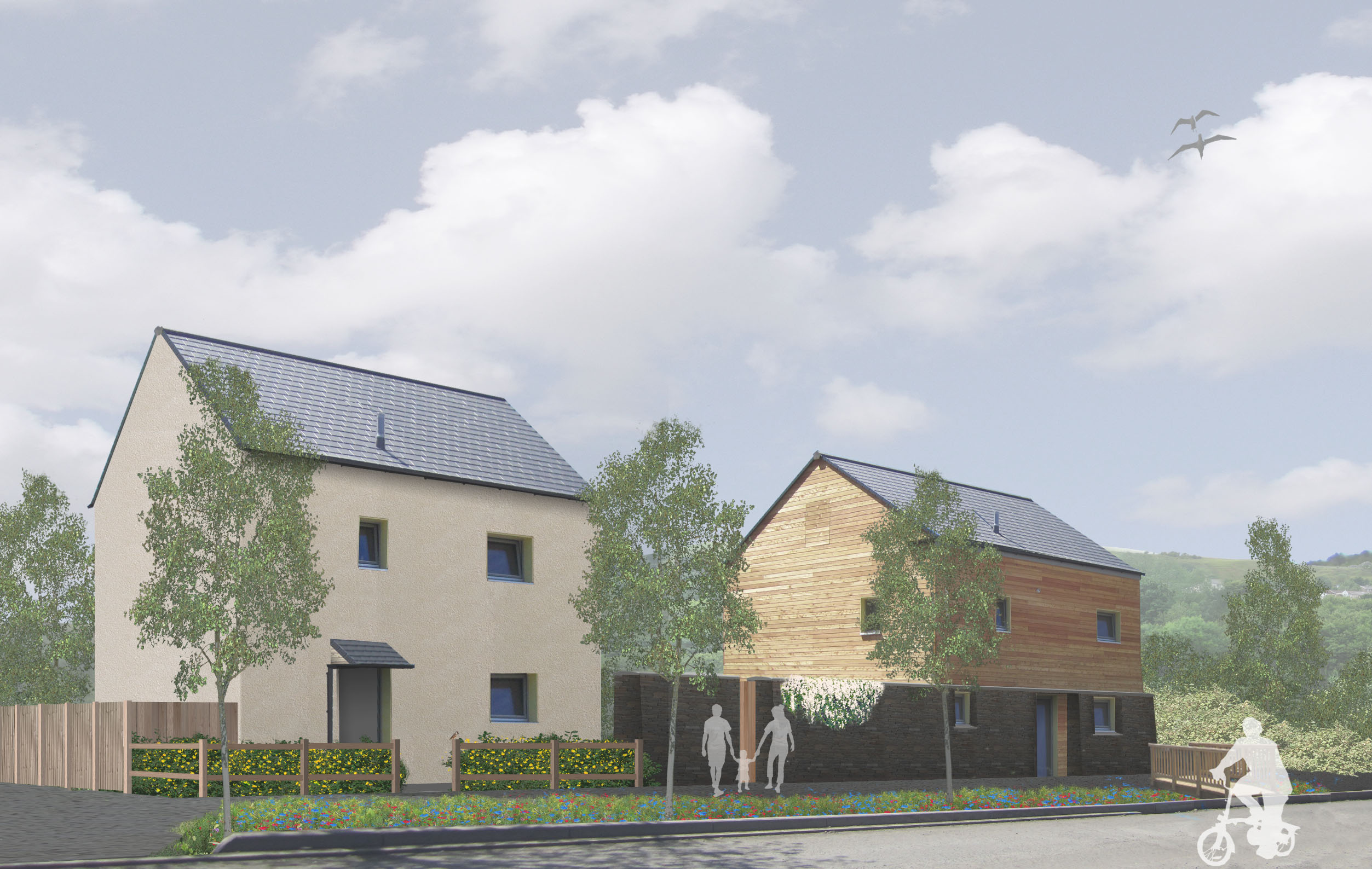
Larch House (right) and Lime House (left), North Elevations
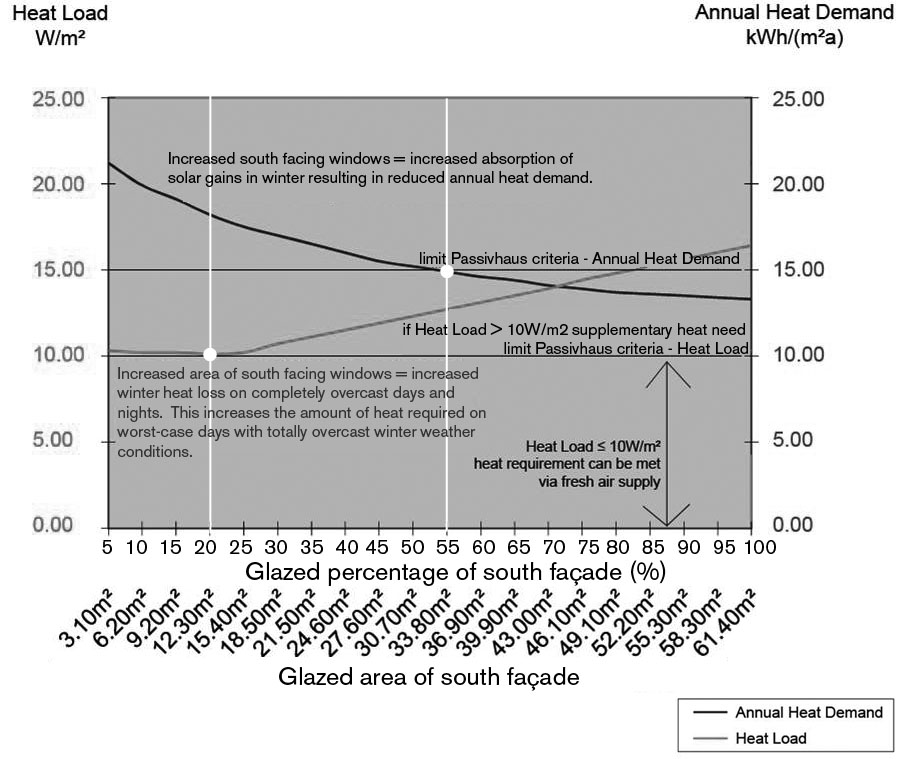
Weather Optimisation Graph
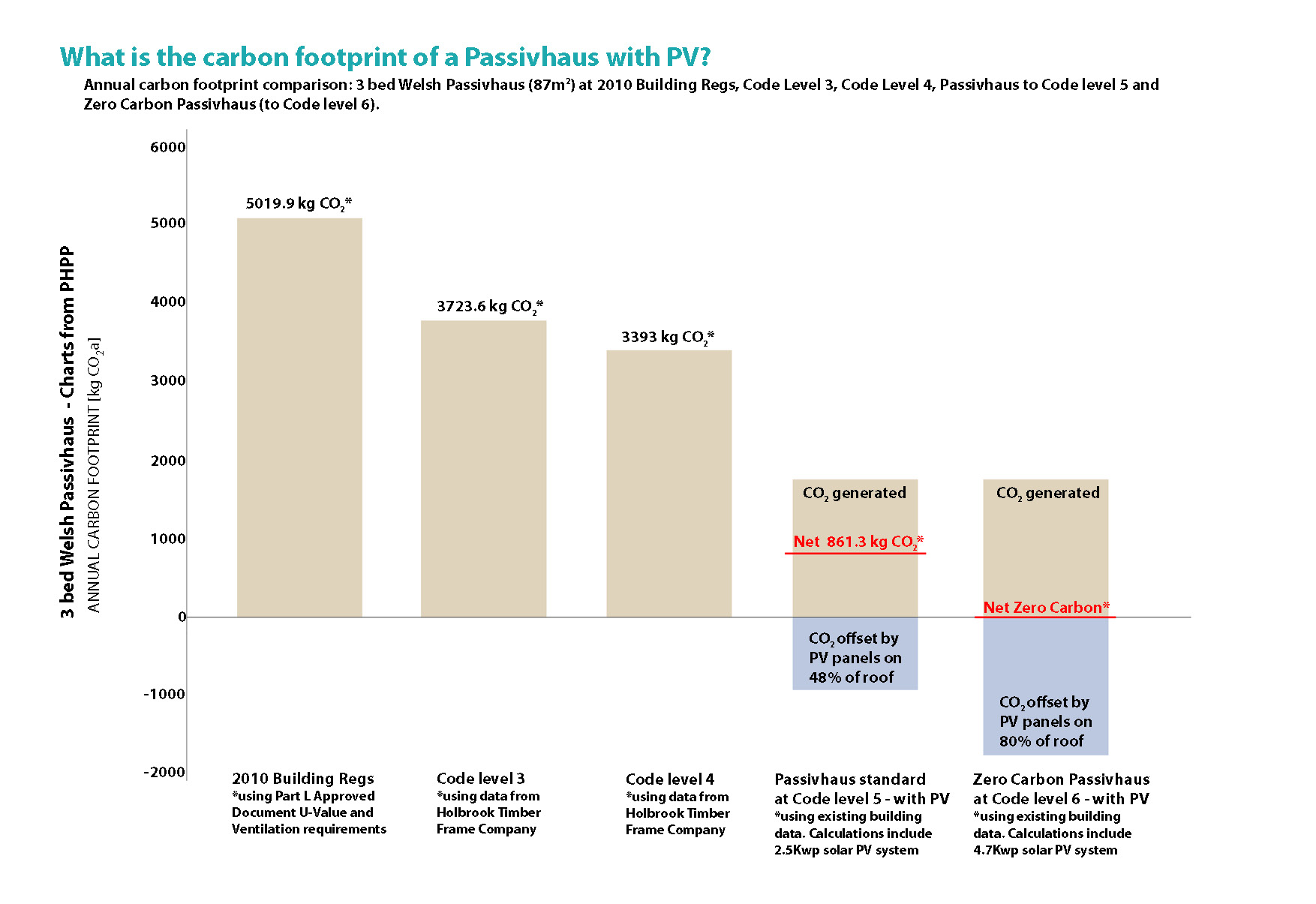
What is the carbon footprint of a Passivhaus with PV?
[[{"type":"media","view_mode":"media_large","fid":"2859","attributes":{"class":"media-image","id":"1","style":"width: 540px;","typeof":"foaf:Image","width":"540"}}]]
What is the carbon footprint of a Passivhaus?
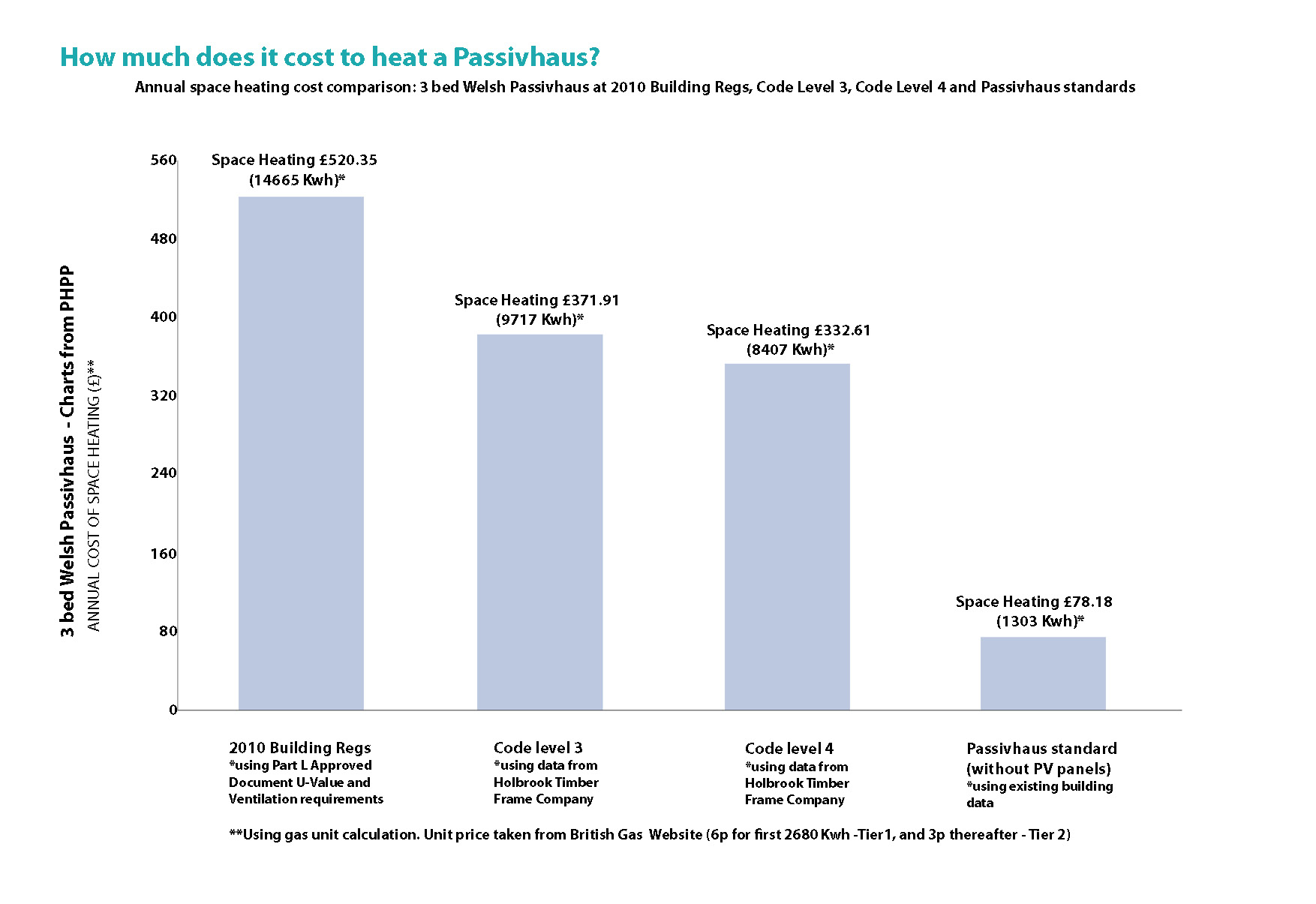
How much does it cost to heat a Passivhaus?
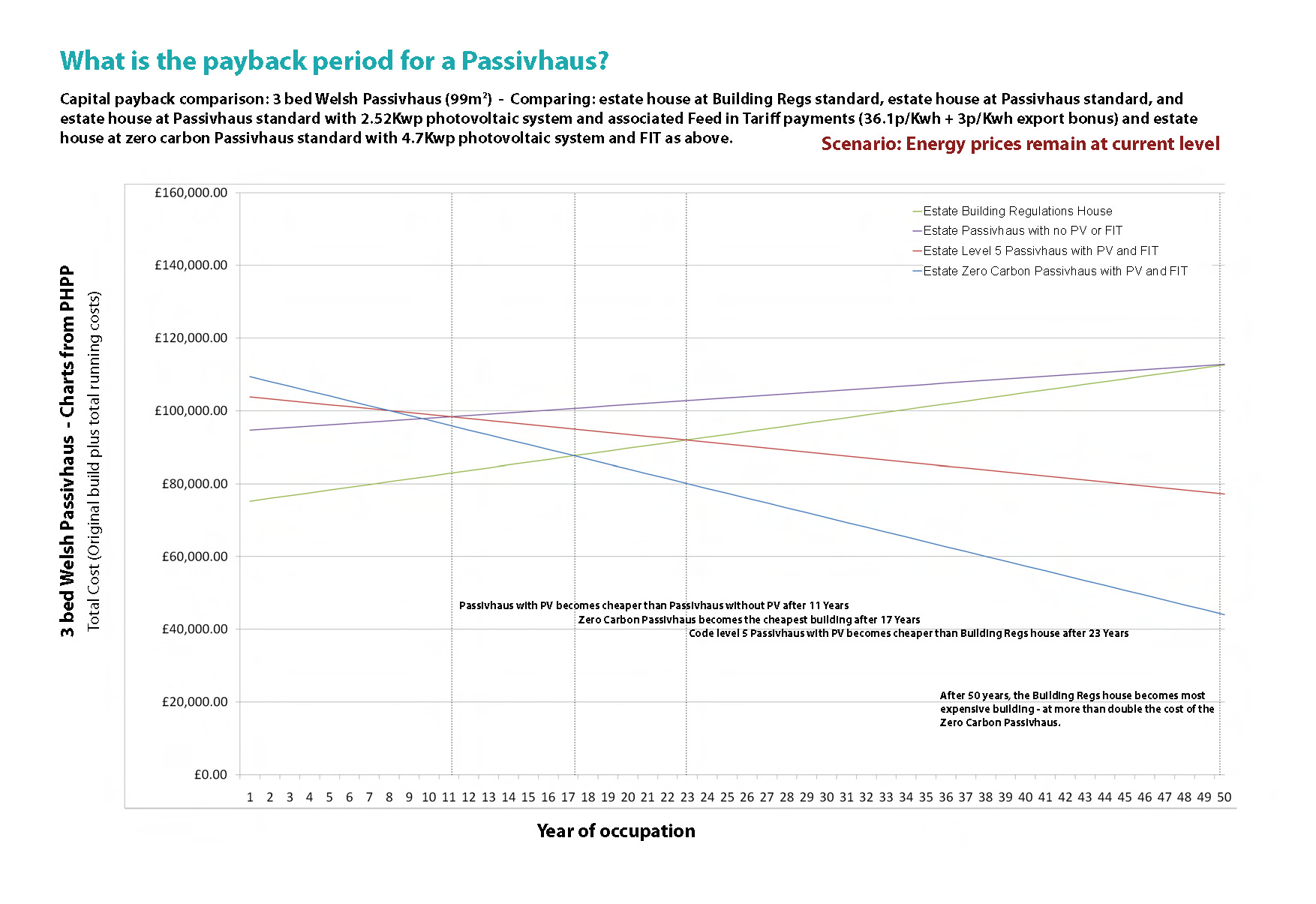
What is the payback period for a Passivhaus with stable fuel prices?
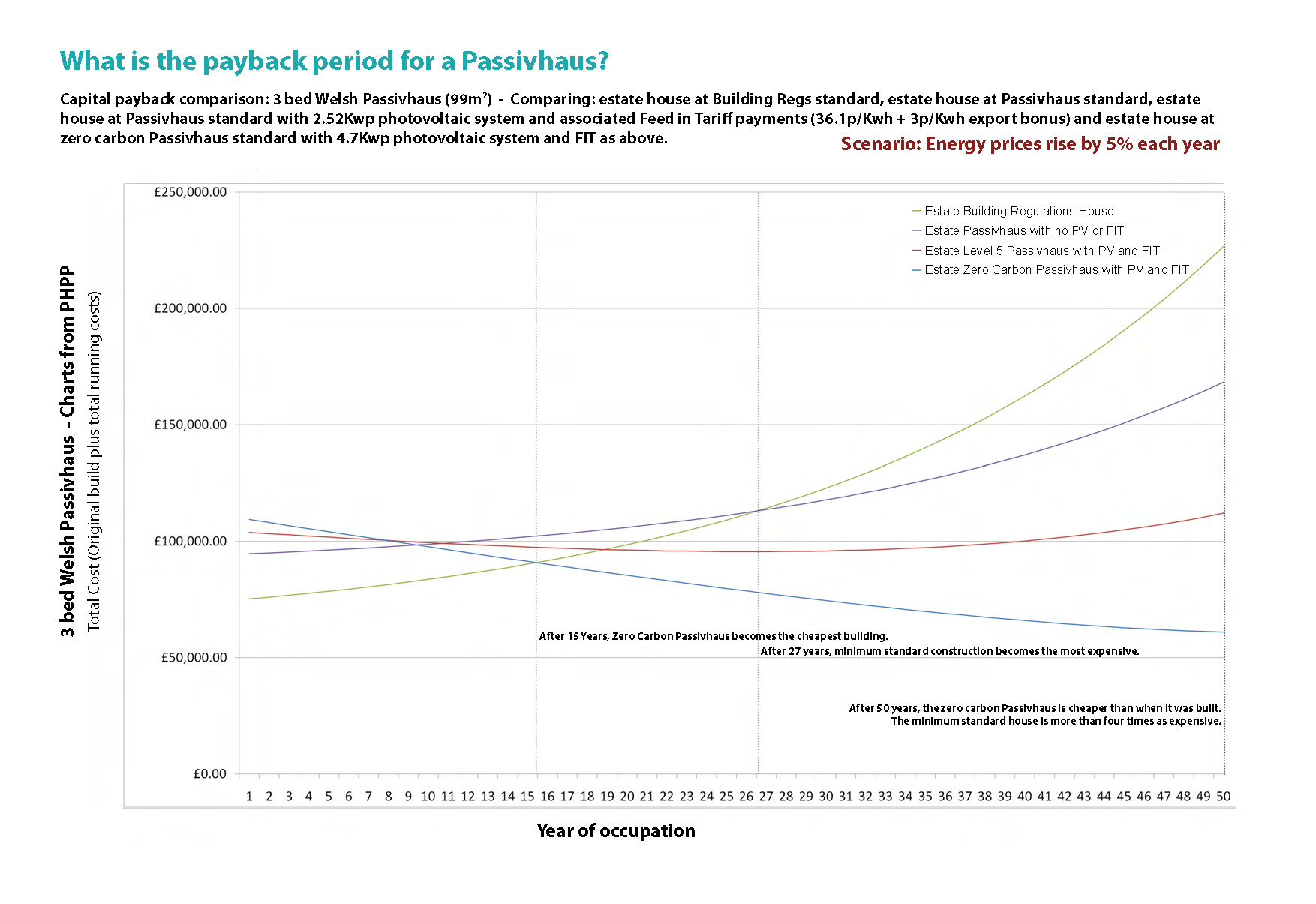
What is the payback period for a Passivhaus with 5% annual fuel price rises?
[[{"type":"media","view_mode":"media_large","fid":"2863","attributes":{"class":"media-image","id":"1","style":"width: 540px;","typeof":"foaf:Image","width":"540"}}]]
What is the payback period for a Passivhaus with 10% annual fuel price rises?
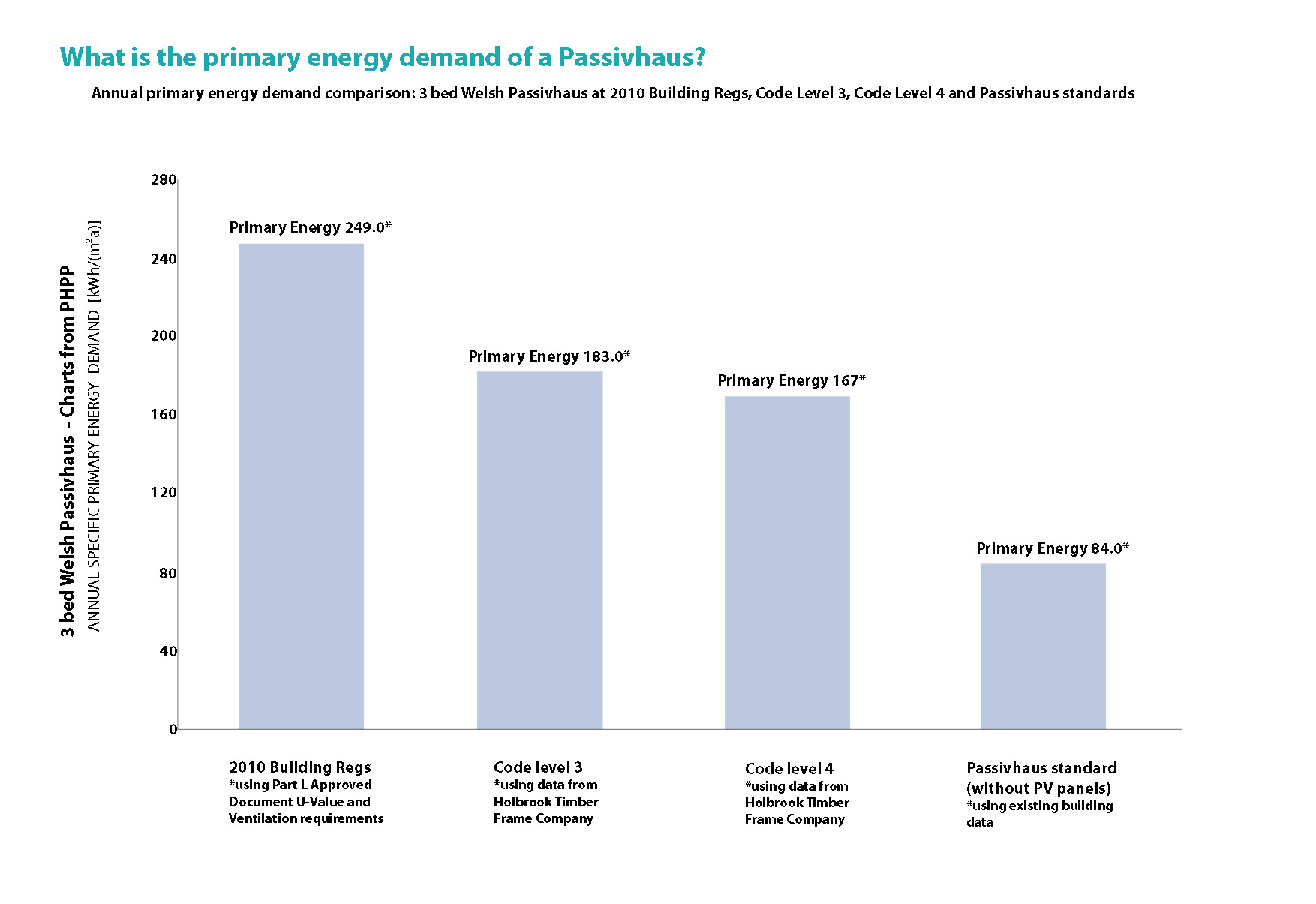
What is the primary energy demand of a Passivhaus?
[[{"type":"media","view_mode":"media_large","fid":"2865","attributes":{"class":"media-image","id":"1","style":"width: 540px;","typeof":"foaf:Image","width":"540"}}]]
How much does it cost to run a Passivhaus with PV?
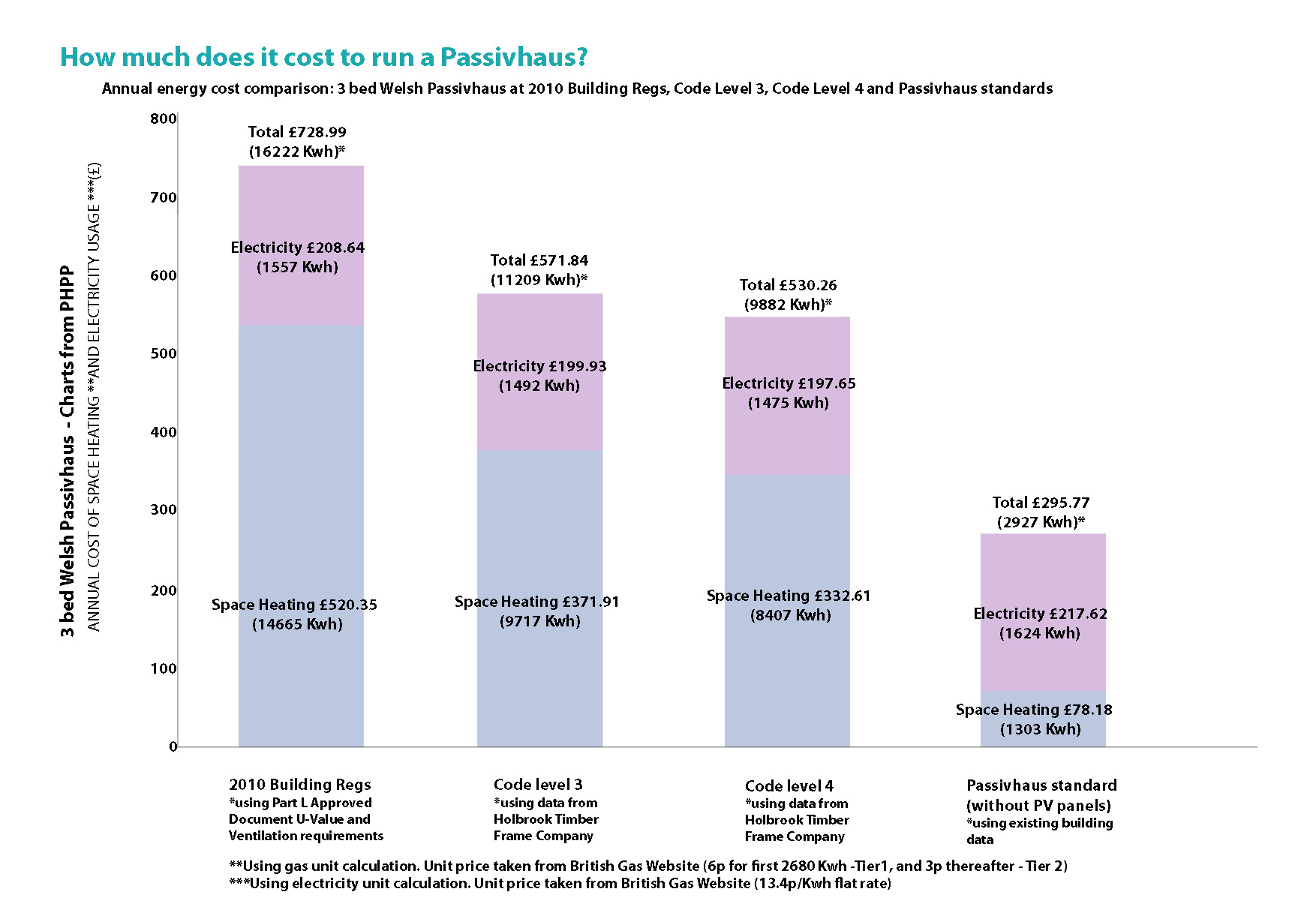
How much does it cost to run a Passivhaus?
: